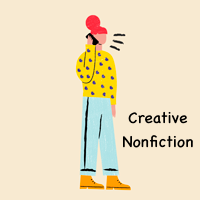Thomas had put on his best new school shoes, since it was the first day of the new year.
This morning, when the alarm had gone off, Thomas had woken with a jump.
But now that was already an
...
[+]
In India, Korean dramas took a hit after an action-romance drama named Descendants of the Sun aired on Zee Zindagi Channel in 2017. They premiered the Hindi dubbed version of the drama, which is a love story between a Korean Special force captain (Song Joong Ki) and a Surgeon (Song Hye-Kyo). Together they face challenges in a war-torn country. After this, a lot of people started exploring K-dramas and began binge-watching them. Even before this show premiered, in 2014 a Tamil TV Channel named Puthuyugam TV also aired K-serial block that featured K-dubbed dramas such as Boys over flowers, The heirs and My Love from the star.
Korean shows mostly attract female audiences from which they get the highest views, so they started targeting them. The dramas mainly feature romance and relationships over lust and violence. It consists of numbered episodes with the beginning and the end of the story, unlike the typical Indian shows where the story goes on for years and years. Korean shows have a lot of drama, but not as much as Hindi TV shows where we see a scene 10 times and listen to the same dialogue on repeat.
A student at the Korean department at Jawaharlal Nehru University shared in her interview, with The Indian Express, how K-drama helped her become more familiar with the language. She talked about how she was totally oblivious to the concept of k-drama until she took the language for her higher studies. She was enjoying while exploring the culture and language, it gradually made her drop the Hindi and English content.
A Still from Crash Landing On You
Apart from the beautiful landscapes of South Korea, they also show dramas featuring the reunification of South and North Korea such as Crash Landing On You, which shows the love story of a woman from the south which accidentally goes to the north and how an army officer helps her hide from the north officials. They both fall in love and struggle between the borders. The Student also says ‘It hits home as India and Pakistan are also in conflict. North and South Korea were born of war, but a Unification Ministry is working towards the reunification’. she adds it’s good to have hope.
Korean dramas are not only restricted to romance and comedy but also have many genres such as history, fantasy, mystery, thrillers, crime investigation, folklore and much more.
People never forget to criticise Korean culture by saying ‘The male actors look like females’, ‘They are Chinese’ and much more. But that’s what their culture is, they are just following it. It’s just that their culture is different from other cultures which makes them unique. In a stereotypical society, people are always going to criticise something unique or different from their existing standards. But this doesn’t stop the thousands of fans in the country from binge-watch K-dramas. Language is not a barrier here, they provide subtitles, and C’mon, millennials are used to subtitles. Once you start using them, it becomes a habit. And who knows you may also start understanding the basics such as Annyeong (‘Hi’) and Gamsahabnida (‘Thankyou’). The world is full of Languages and cultures, it’s just one needs to encourage themselves to explore and lookout for it.



